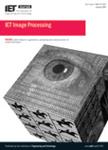版权所有:内蒙古大学图书馆 技术提供:维普资讯• 智图
内蒙古自治区呼和浩特市赛罕区大学西街235号 邮编: 010021

作者机构:Hunan Normal Univ Key Lab High Performance Comp & Stochast Informat Minist Educ China Coll Math & Comp Sci Changsha 410081 Hunan Peoples R China
出 版 物:《IET IMAGE PROCESSING》 (IET影像处理)
年 卷 期:2019年第13卷第1期
页 面:142-151页
核心收录:
学科分类:0808[工学-电气工程] 1002[医学-临床医学] 08[工学] 0812[工学-计算机科学与技术(可授工学、理学学位)]
基 金:National Natural Science Foundation of China Hunan Provincial Science and Technology Plan [2013FJ4052] Construct Program of the Key Discipline in Hunan Province
主 题:image colour analysis learning (artificial intelligence) image segmentation adaptive appearance separation interactive image segmentation Dense CRF interactive segmentation hot topic wide application efficacious appearance separation model interactive binary segmentation foreground background colour models corresponding geodesic models popular densely connected conditional random field framework relevant parameter values target images per-image manner mean-field inference time-consuming parameter segmentation efficiency scribble-style interaction
摘 要:Interactive segmentation has recently become a hot topic for its wide application. The authors propose an efficacious appearance separation model for interactive binary segmentation, which incorporates the difference of foreground and background colour models and the difference of corresponding geodesic models into the popular densely connected conditional random field (Dense CRF) framework. The proposed method can adaptively set relevant parameter values in this framework according to the characteristics of target images in a per-image manner, therefore, it gets rid of the dependence on specific datasets. After accomplishing a mean-field inference, the authors are able to get satisfactory results without the time-consuming parameter learning process and multiple iterative optimisations. Overall, the proposed approach is highly efficient and mitigates the contradiction between accuracy and segmentation efficiency. In addition, the proposed approach reduces the efforts of scribble-style interaction from users. The experimental results on three famous datasets show that the proposed method is superior to the other five new algorithms released in recent years regarding accuracy, and is faster than or close to them in runtime.